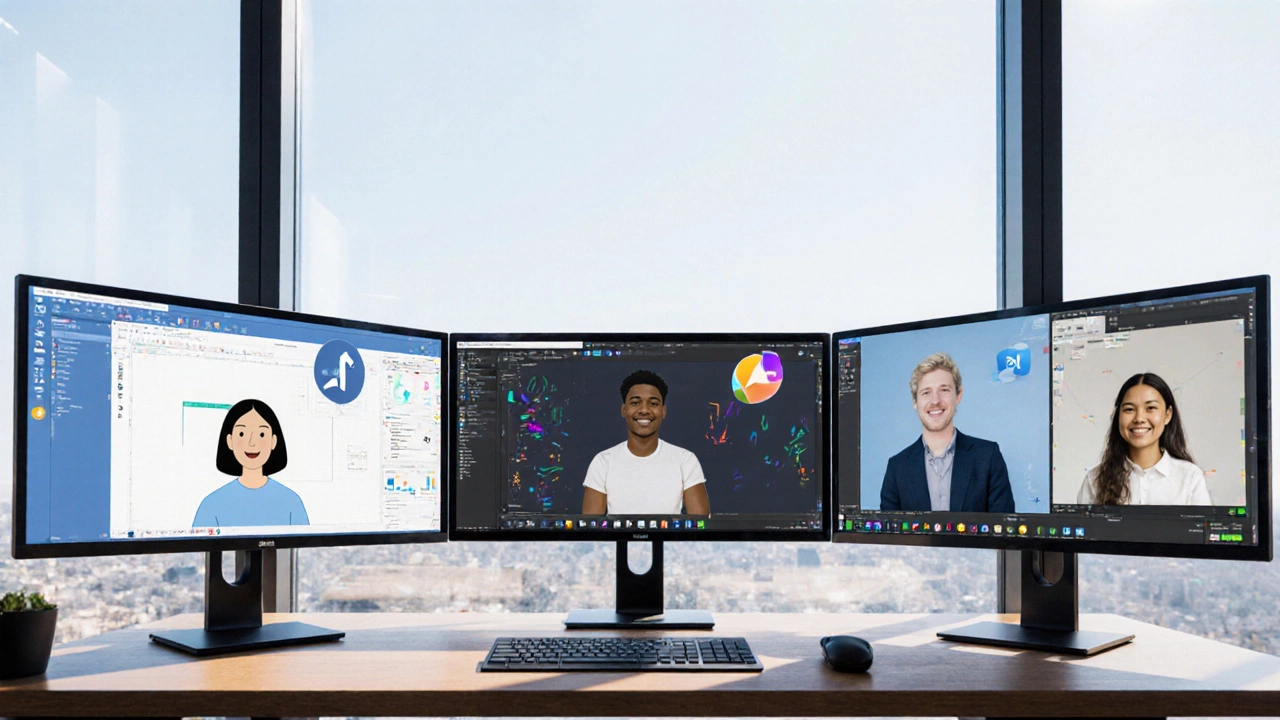
Best UI/UX Design Software 2025: Compare Top Tools
25 Oct 2025Discover the top UI/UX design software of 2025, compare features, pricing, and best use cases, and learn how to pick the perfect tool for your workflow.
When working with UI/UX design software, applications that help designers plan, prototype, and test digital interfaces. Also known as user interface design tools, it bridges the gap between ideas and functional products. Prototyping tools, softwares that turn static mockups into interactive flows are a core component, while wireframe apps, lightweight editors for quick layout sketches help map structure early on. Together they enable a design system that standardizes colors, typography, and components across projects. This ecosystem empowers designers to validate ideas fast and hand off clean assets to developers.
Prototyping tools enable designers to simulate user journeys without writing code. They require features like draggable components, transition libraries, and real‑time collaboration. When a prototype mimics a real product, user testing platforms, services that collect feedback on interactive mockups can capture genuine reactions, influencing the next iteration. This loop—design, prototype, test—creates a feedback cycle that reduces costly redesigns later. For example, a designer using Figma or Adobe XD can share a clickable mockup, gather comments via Lookback or Maze, and instantly adjust the flow.
Wireframing apps focus on layout clarity. They support designers in defining information hierarchy before visual polish. By establishing a clear grid and placing placeholder content, wireframes reduce ambiguity for stakeholders. Once the structure is approved, designers migrate the wireframe into a high‑fidelity prototype, enriching it with brand assets and motion. This progression ensures that both the skeletal framework and the visual details align with business goals.
Design systems serve as a shared language between design and development teams. They include reusable components, style guides, and code snippets that keep the UI consistent across pages and apps. When a design system is integrated into a UI/UX design software, updates to a button style, for instance, ripple through every mockup automatically. This saves time and prevents visual drift, especially in large projects with multiple contributors.
Choosing the right UI/UX design software often depends on workflow preferences. Some teams prioritize real‑time collaboration, making tools like Figma indispensable. Others need offline capabilities and prefer Sketch or Axure. The decision also hinges on the need for advanced prototyping—if interactive micro‑animations are crucial, tools with built‑in animation editors become a priority. Regardless of the choice, the software should seamlessly export assets to developers, whether as CSS snippets, SVGs, or design tokens.
Beyond the core tools, supporting platforms enhance the overall design process. Version‑control integrations let designers track changes over time, while plugin ecosystems extend functionality with libraries for icons, illustration, or accessibility checks. When a designer couples a UI/UX design software with a user testing platform, they close the gap between hypothesis and validation, turning assumptions into data‑driven decisions.
Below you’ll find a hand‑picked collection of articles that dive deeper into each of these areas. From comparisons of prototyping versus hand‑coding to practical guides on integrating Python with WordPress, the posts cover the full spectrum of tools, techniques, and strategies that shape modern UI/UX work. Explore them to sharpen your toolkit, streamline your workflow, and deliver experiences that truly resonate with users.

Discover the top UI/UX design software of 2025, compare features, pricing, and best use cases, and learn how to pick the perfect tool for your workflow.